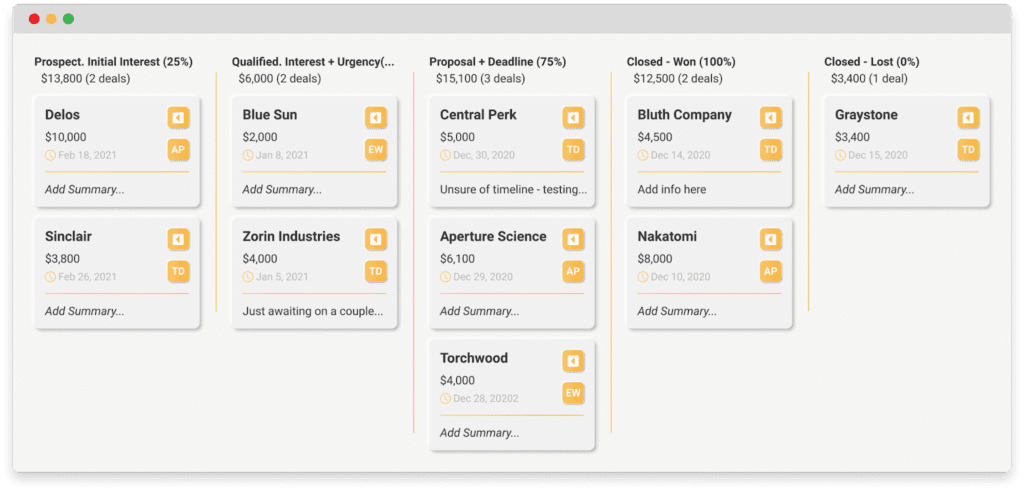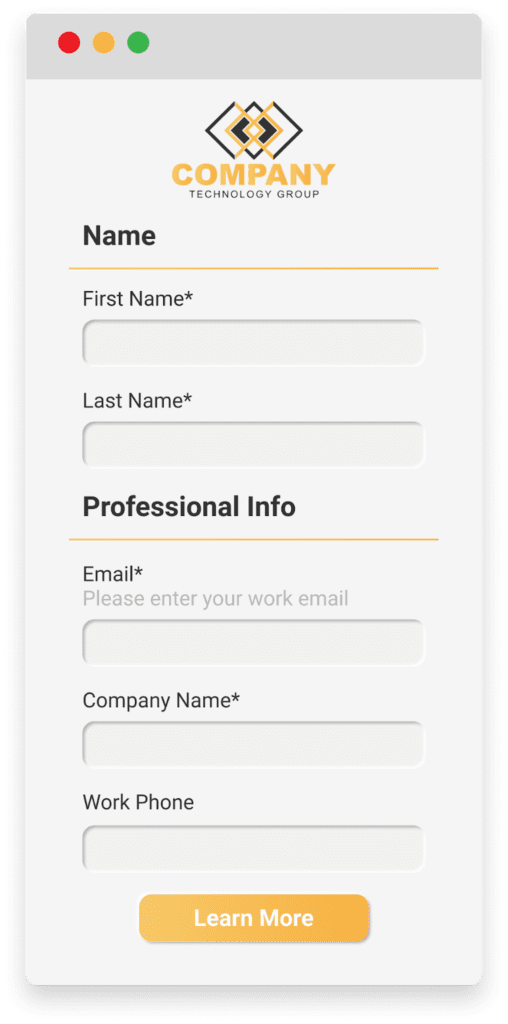Last updated on August 3rd, 2023

This guide gives you practical ideals on how to use customer segmentation models and tools to craft relevant marketing campaigns for your audiences.
72% of people only engage with marketing messages that are relevant to them.
It just makes sense.
Nobody wants to be marketed with something they don’t want or need.
If you don’t make your marketing relevant to your audience you risk eventually falling into irrelevance yourself.
The problem?
Creating relevant messaging at scale takes a lot of effort.
The solution?
Use customer segmentation to divide your prospects and customers into groups to provide relevance (without doing 1-to-1 marketing).
Let’s discuss how.
Table of contents:
- What Is Customer Segmentation & Why Is It Necessary?
- What Are The Types Of Customer Segmentation?
- What Are A Few Real-World Examples Of Customer Segmentation?
- How Do I Segment My Leads And Customers?
- What Software Is Ideal For Customer Segmentation?

VipeCloud is the only Automation tool your small business needs to
be the hero to your customers.
With Email, Texting, Social, Suites, Chat, Stories, Video Email & Sign Up Forms fully built-in, we provide you with the perfect platform to grow your business.
15 Day Free Trial – Get started risk free. No CC needed.
What Is Customer Segmentation & Why Is It Necessary?
Customer segmentation is the process of dividing prospects or customers into categories based on commonalities so that you can market to them more successfully.
Creating these separate customer segments allows you to connect to their needs and desires in a more relevant manner.
Segmentation also helps you upsell and cross-sell effectively at scale.
For example, one of the most common marketing avenues you see personalization emphasized in is email marketing.
People receiving emails need to feel that the messaging (subject line, email content, and CTA) all relate to them.
Customer segmentation is done best with CRM software. Not only can you store customer information, but you’ll also have tools to assist you in segmenting them and marketing to them (email, text message marketing, social media, etc.)
When this is done, your business can reap some great benefits of segmentation:
- Thorough customer insights
- Better customer satisfaction
- Marketing message clarity
- Higher conversion rates
What Are The Types Of Customer Segmentation Models?
Demographic Segmentation
Demographic segmentation deals with explicit attributes that a segmentation group shares.
Here are a few examples:
- Gender
- Age
- Job title
- Income
- Ethnicity
- Family status
It’s no secret that demographic segmentation can produce great marketing ROI since you’re directly focusing on niche individuals for your messaging.
Let’s say a seasoned business owner helps young female entrepreneurs in the health niche manage their time and scale their businesses.
She has a tailored audience with a specific age range, title, and industry. This allows her to mention common pain points of the demographic (ex., lack of experience, lack of clarity on business goals, etc.). in their emails, landing pages, website, ads, etc.
Behavioral Segmentation
Behavioral segmentation, one of the most popular forms of segmentation, refers to grouping prospects and customers via the actions and behaviors they take.
For instance, you can group people by:
- Email interactions
- Purchase habits
- Site interactions
- Inactivity with the business
Behavioral segmentation can be powerful because you can tailor marketing messages based on position in the buying cycle.
For instance, if a group of prospects is opening your emails and clicking your links, they might be in the consideration phase of the buying journey.
Prospects in this group could benefit from educational content or seeing case studies.
Segmenting your audiences based on this behavior will help you know when and what to send to those prospects.
One of your best tools for making this as smooth sailing as possible is CRM. With VipeCloud, for example, you gain the ability to score leads.

Lead scoring is a system that allows you to award or deduct points on prospects based on how they behave (you can include demographic scoring as well).
According to Marketing Sherpa, companies using lead scoring boosted lead generation ROI by 77%.
CRM also gives you customizable pipelines that let you segment prospects based on how sales-ready they are.
Segmenting by the customer journey (still considered behavior) can work so well because it helps you follow the proven marketing model AIDA (awareness, interest, desire, action).
People segmented into your awareness stage (new leads) will need different marketing approaches than those in your “desire” stage (sales-ready leads.)
Geographic Segmentation
Geographical segmentation helps you group people by physical location in different regions that you serve.
This can help you speak to your market and create offers around region-specific holidays, events, or celebrations.
Geographic segmentation variables can include:
- Countries
- Regions
- Cities
- Population
- Language
- Culture/Customs
This form of segmentation can be powerful, especially for companies that operate globally.
For instance, let’s say a B2C eCommerce clothing company offers seasonal collections. They can market their jackets and hoodies to segmented customers in colder climate seasons while marketing warmer clothing to those in the warmer seasons.
This allows for more conversions because of relevant marketing.
Or in the B2B arena, companies can create marketing campaigns in different languages to reach and serve international markets.
Psychographic Segmentation
(Don’t worry, this segmentation type isn’t as complicated as it sounds.)
When segmenting customers through psychographic means, you do so through customer interests, personalities, and drives.
It’s about using data (surveys, pipelines, past customers) to develop collective shared interests that a segmented audience has.
For instance:
- Values
- Pain points
- Goals
- Attitudes
- Biases
- Beliefs
- Personality traits
- Emotional responses
Here, there’s a deeper, more psychological approach to marketing to your customers.
Psychographics practically write your marketing copy for you because they offer a deeper analysis of who your customers are.
Real-World Examples Of Customer Segmentation
BustedTees Email Personalization & Timezone Case Study
BustedTees is an eCommerce clothing company. In the past, they’d send 1 email campaign to their subscribers based on their timezone (Pacific time).
Since their emails were mainly going out to the ideal times of their American demographic, BustedTees was missing out on the valuable customers abroad.
Here’s what happened next:
They decided to tailor their emails to their subscribers’ individual “open” times across different time zones.
The tailored emails allowed for better email KPIs.
They gained an 8% increase in revenue from email marketing alone, an 11% higher click-through rate, and a 17% increase in email responses.
All this stemmed from tweaking their customer segmentation approach!
Facebook & Instagram’s Automated Behavioral Trigger Email
Although social media is a powerhouse in today’s age, social media companies still have to set the right systems in place to have people come back again (and again) to their platforms.
This is the case with Instagram & Facebook’s automated emails.
When a user has shown 5 days straight of inactivity (behavior), an automated email is sent, asking if they need help logging back into their account.
Now with so many people being tech-savvy, a good portion of those that receive this email may not need help logging back in.
But instead, they’re reminded of the platform, and that alone can be what causes them to log back in.
You’re probably thinking, “That’s smart,” and it is!
These emails are automated and sent at scale!
And guess what?
Trigger emails are shown to have 152% higher open rates than regular emails!
Facebook and Instagram can automatically analyze which end-users to send the right automation to by segmenting customers by behavior.
How Do I Segment My Leads And Customers?
Segmenting Using Sales CRM

CRM allows you to segment customers based on where they are in your pipeline (this brings significant benefits for marketing and sales).
We know why relevant messaging can help with marketing, but with sales, you can sell to the right people at the right time.
To segment your customers using a sales CRM, it’s as simple as positioning them correctly in your sales funnel.
So, for instance, let’s say prospect A and prospect B are interested in your B2B service.
If your prospect A is in your “sales qualified” category, they can automatically get sent an email asking them the best availability for a discovery call.
On the other hand, Prospect B is ready to invest in your service and just needs a pricing quote to bring to their company partners.
You can send a quote to them via email after they’ve gone through your sales process.

The data and segmentation that your CRM provides shortens sales cycles, which leads to more ROI.
Segmenting Using Email Marketing

VipeCloud CRM gives you access to a robust email marketing tool. With this tool, you can access your contacts and easily segment them into your ideal groups.
You can name and save these lists for future reuse and add or subtract contacts as needed.
Here are some email marketing segmentation ideals:
- Email engagement – People that have high open rates, or link clicks (behavior)
- Job title – People with job titles that center around decision-making responsibilities: CEO, COO, manager, director, etc. (demographic)
- Current customers – People that have purchased from you and that could benefit from information on product updates or upsells (demographic)
- MQLs – Customer groups that aren’t sales-ready yet, but could use some marketing messaging, case studies, and education to help them take the next step (Behavior)
Segmenting With Forms

Sign-up forms give you a fantastic means of segmenting your audience in many ways. You can create and A/B test multiple forms, drive traffic to them, and end up with a laundry list of organized leads.
For example, if you’re testing out two separate offers, you can create a sign-up form for each one.
Once leads view and complete your forms, your sales team will know which offer got the person to sign-up, allowing them to prepare their sales approach.
What Software Is Ideal For Customer Segmentation?
With the countless means to segment your audience in effective and profitable ways, CRM software helps make this process very simple.
VipeCloud was built with simplicity and effectiveness in mind, which helps it match the versatility that business owners and marketing personnel are looking for.
So what’s the best software for customer segmentation and analysis?
VipeCloud’s Sales & Marketing Suite is your answer!
When inside, you gain access to the ideal segmentation tools (sign-up forms, email marketing, pipelines) that help you make the proper marketing and sales decisions.
Ready to start marketing more effectively with customer segmentation? Try it for a free 15-days!
If you’d like guidance in how it works, feel free to request a demo with one of our CRM experts.

Leave a Reply